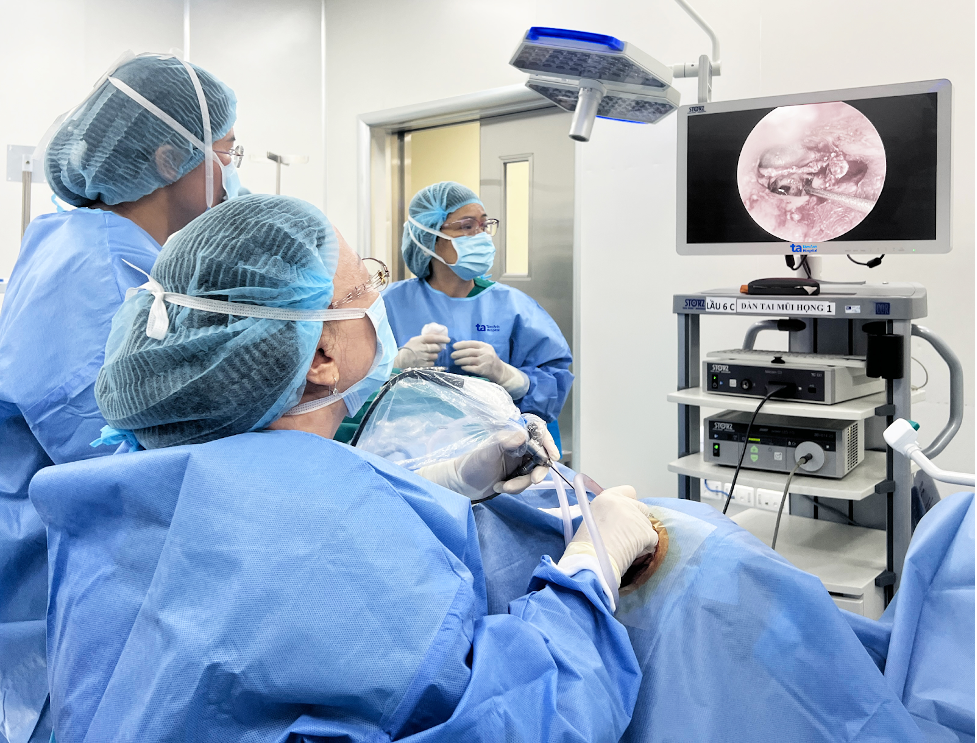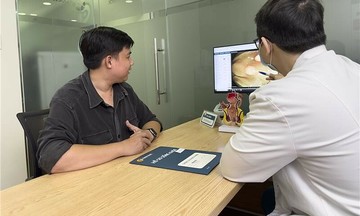A hearing test at Tam Anh General Hospital in TP HCM revealed that Mr. Thang had moderate mixed hearing loss. A CT scan of his ears showed localized sclerosis in front of the oval window (where sound vibrations are received from the stapes bone into the inner ear) in both ears. The stapes is the smallest bone in the body, measuring only about 3 mm, and is responsible for transmitting sound vibrations from the eardrum to the inner ear, where the brain receives and processes sound.
Professor Doctor Tran Phan Chung Thuy, director of the ENT Center, diagnosed Mr. Thang with otosclerosis in both ears. The hardening of the stapes bone (called otosclerosis) prevents sound from passing through, causing gradual hearing loss until complete deafness.
After consultation, the doctors decided to perform endoscopic surgery to replace the stapes bone with a prosthetic. According to Professor Chung Thuy, compared to traditional microsurgery, this technique uses an optic combined with a high-resolution camera to provide a wider and clearer view. This allows the doctor to clearly observe the deep structures of the middle ear, such as the oval window, the vestibular system, and the stapes bone. A small window is opened to minimize dizziness after surgery.
 |
Professor Thuy (seated) performs endoscopic stapes replacement surgery on Mr. Thang. Photo: *Tam Anh General Hospital* |
Mr. Thang first underwent surgery on his right ear, where a 3 mm prosthetic stapes bone was implanted to vibrate with incoming sound, transmitting signals to the inner ear and brain, reactivating the natural sound reception process.
After the surgery, his hearing recovered well, and he could clearly hear subtle sounds like birdsong and rustling leaves. Three months later, he underwent a similar procedure on his left ear. For two weeks post-surgery, he needed to limit contact with people with respiratory infections, avoid loud noises, refrain from flying, diving, or heavy lifting. Now, two months after the left ear surgery, he no longer needs to use a hearing aid as before, and the doctors assess his hearing as fully restored in both ears.
Otosclerosis causes gradual hearing loss over months or years. Older adults often mistake it for presbycusis or age-related hearing loss. Symptoms of otosclerosis include progressively worsening hearing, difficulty hearing low-pitched sounds, tinnitus, and paradoxically better hearing in noisy environments (unlike other types of hearing loss).
If you experience unusual signs such as gradual hearing loss, difficulty hearing soft sounds, or tinnitus, you should consult an ENT specialist for timely diagnosis and treatment.
Uyen Trinh
| Readers can submit questions about ENT issues here for doctors to answer. |












